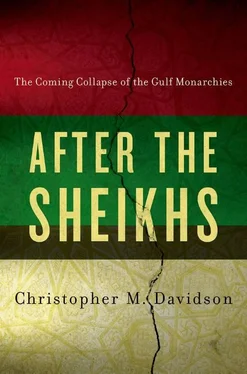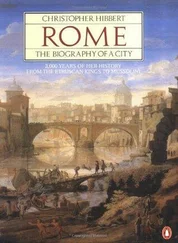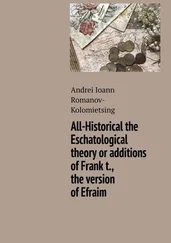The exact routes into prostitution in the Gulf monarchies tend to differ, varying from country to country, but in general it is either a story of entrapment or human trafficking. Entire books have now been devoted to the subject, especially regarding the women who end up in Dubai. [669] 12. See for example Mahdavi, Parvis, Gridlock: Labor, Migration, and Human Trafficking in Dubai (Palo Alto: Stanford University Press, 2011).
In most cases it is a story of economic deprivation, misery, human rights abuses, and a disregard of the values and traditions that the indigenous populations of the Gulf monarchies are supposed to uphold. Commenting on the situation from the perspective of a major supplier country, an Iranian military officer has explained that ‘…notorious women used to identify young women and girls from [Iranian] families with financial difficulties, then under the pretext of happiness for these girls in Persian Gulf countries, they offered a ransom to the families and in a matter of three weeks they transferred these girls to Dubai. After arrival in Dubai, through their network, they introduced these girls to Arab businessmen. Each girl was sold for $5000 profit for their families and ten times the amount for the traffickers. The buyers used these girls for their sinister business’. Providing another example, he explained how men masquerading as taxi drivers would drive around Tehran identifying runaway girls, and then report them to traffickers who would then arrange for their visa and passport to go to the Gulf monarchies. The travel details were described as ‘…taking no more than a month, and were arranged under the pretext of tourism. While waiting for passport and visa, these girls were promised a better and prosperous life and marriage to Arab Sheikhs. However, after entering UAE, the ring members handed these girls over to brothels and prostitution networks’. [670] 13. SINA News Agency press release, May 2004, translated by the Women’s Forum Against Fundamentalism in Iran.
Criticism of these many problems and issues is, as would be expected, becoming increasingly loud. A few years ago, for example, a prominent UAE national claimed to a major US newspaper that the city he lives in — Dubai — is now unrecognisable and is not even Arab anymore. Moreover, he complained that when he visits one of the many malls, the vast majority of patrons are foreigners, and that he rarely hears Arabic. Most damningly the article recorded the man’s concern that despite religious prohibitions ‘…drinking is unabashed, and [he fears] public wine-tasting parties are on the way, with the beaches of his youth having been taken over by hotels and their occasionally topless sunbathers and other westerners whose dress is deemed inappropriate… he grimaces at women jogging in the streets, sometimes with their dogs, considered unclean under Islamic law, and the celebration of Islamic holidays and the country’s national day pale before the more commercialised commemoration of Christmas’. He concluded his interview by stating that he and his family felt they were in ‘internal exile’ and in an effort to maintain their Arab and Muslim identities they had had to move away from the central area of Dubai to an outlying suburb. [671] 14. Washington Post , 30 April 2006.
This is far from being an isolated case, with there being many other examples of UAE national families relocating from Dubai completely, or at least building a new family home in another emirate so that their children could still feel they were growing up in an Arab city. Most recently, in 2012 there has been an extensive, grass roots social media campaign to uphold modest dress codes. Launched by two women and now centred on a Twitter subject entitled #UAE-DressCode, the campaign has seen large numbers of UAE nationals criticise the inaction of their government to enforce basic standards. [672] 15. BBC News, 5 July 2012. The authorities seem unwilling to take action, likely concerned that any enforcement of dress code will be viewed as a concession to Islamist groups in the country.
Famously outspoken, even Dubai’s chief of police [673] 16. Dahi Khalfan Al-Tamim.
has publicly discussed the situation, arguing that expatriates and tourists pose a serious threat to national identity and societal norms in the Gulf monarchies. Speaking on a popular call-in show on Qatar Television, he was debating ‘Whether the rising numbers of foreign workers posed a serious threat to the Gulf’s identity and culture, and if so, what steps the governments in the region could take to reduce the danger?’ Among other statements, he argued that ‘…if the Gulf governments do not take bold steps to check the inflow of foreign workforce, a day could come when locals would be marginalised in their own countries and become like Red Indians [sic] in the US’. [674] 17. Gulf News , 26 December 2010.
Interestingly, since the credit crunch and the slowdown of Dubai’s economy, there have been some small signs that the government has begun to take the matter more seriously — perhaps because it has been concerned that many UAE nationals were becoming increasingly frustrated with the authorities due to poor-performing investments or substantial losses. Notably, in 2009 fresh ‘decency regulations’ were introduced in Dubai, leading to posters appearing in shopping malls and other public places that instructed what women could and could not wear, and warned about public displays of affection. Moreover, in summer 2011 standalone bars and restaurants that were not connected to hotels were banned from displaying alcohol in full view, while bars inside hotels were ordered to tint the glass on display cases. To some extent these mirrored similar regulations introduced in neighbouring Sharjah in 2001. [675] 18. Gulf News , 26 September 2001.
Perhaps most dramatically, especially given their aforementioned attempts to build up a tourist industry and host international sporting events, in 2009 alcohol was completely banned in Bahrain’s three star hotels, following criticism from pressure groups, and in early 2012 Qatar announced that alcohol would be banned on the Pearl — one of its major tourism and real estate developments. [676] 19. Arabian Business , 15 January 2012.
Most vulnerable to criticism with regard to these trends in the region has been Saudi Arabia, given the ruling family’s closeness to the religious establishment and its greater reliance on religious legitimacy. While most nationals are aware of the quantities of alcohol, drugs, and prostitutes in their country, the authorities have nonetheless managed to keep these vices out of the immediate public gaze. Nevertheless several recent developments have sparked anger and outrage amongst Saudi nationals, especially the various construction projects in the two holy cities and the sense that the regime is trying to ‘cash in’ on the pilgrimage industry. In late 2010 it was reported by the New York Times that several new buildings were nearing completion in Mecca. Among these was the Royal Mecca Clock Tower, also known as the Abraj al-Bait Tower, which in 2011 became the second tallest building in the world. [677] 20. Council on Tall Buildings and Urban Habitat press release, February 2012.
Covered in neon lights and topped with a crescent-shaped spire, it has been described as a ‘kitsch rendition of London’s Big Ben’ while being a ‘cynical nod to Islam’s architectural past’. In order to make way for it, the authorities had to demolish an eighteenth-century Ottoman castle — a practice which is usually justified on the grounds that buildings prior to the founding of the Saudi state were built during a ‘corrupt era’. Unsurprisingly, many have been appalled by the clock tower and the slew of new luxury hotels and high rises that have sprung up in Mecca in recent years. One Saudi architect explained that it as ‘the commercialisation of the house of God’ and that ‘the closer [one gets] to the Grand Mosque, the more expensive the apartments… in the most expensive towers, you can pay millions…. If you can see the mosque, you pay triple’. On this point, it has been claimed that the new buildings will effectively divide Mecca along ‘highly visible class lines, with the rich sealed inside exclusive air-conditioned high-rises encircling the Grand Mosque and the poor pushed increasingly to the periphery… like the luxury boxes that encircle most sports stadiums, the apartments will allow the wealthy to peer directly down at the main event from the comfort of their suites without having to mix with the ordinary rabble below’. According to another Saudi critic ‘…The irony is that developers argue that the more towers you build the more views you have… but only rich people go inside these towers. They have the views… We don’t want to bring New York to Mecca’. [678] 21. New York Times , 29 December 2010.
Читать дальше












